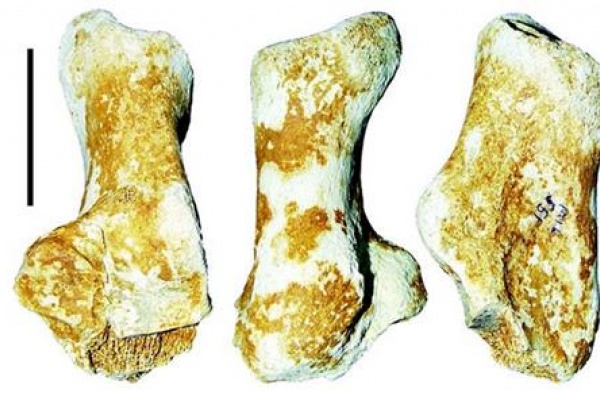A fossil of a gigantic bear that lived 3 million years ago was discovered in the settlement of Millia at Grevena, northern Greece, toning up the notion that the Greek palaeo-environemnt favoured the development of creatures of such enormous size, reports “Greek Reporter”. Besides, it was at the same settlement where scientists had discovered the largest tusks in the world (5.02m). During a recent conference at Thessaloniki, devoted to the study of the bear, whose scientific name is “agritherium”, Assistant Professor of Paleontology Evangelia Tsoukala of the Aristotle University of Thessaloniki, made also reference to the discovery of a heel of the left tarsus of the first Palaeolithic agriotherium found in the area. “The size of the heel, which is 25 percent bigger in relation with a brown bear, is indicative of the size of animal”, said Tsoukala.
The professor also discussed the 5,000 deciduous teeth found in the cave of Loutra in Almopia Speleopark in northern Greece. They belong to the ursus ingressus, a smaller prehistoric cave bear that coexisted with the agritherium and disappeared at the end of the Pleistocene period, approximately 10,000 years ago.
Tsoukala’s dream is to found a national museum of natural history in northern Greece and display the region’s major fossil discoveries.













